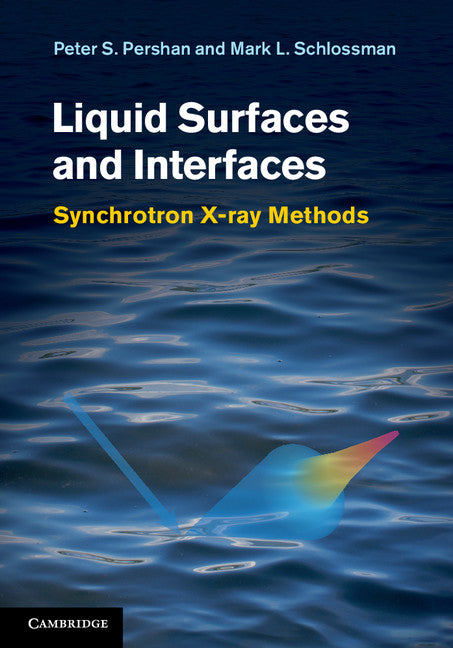Freshly Printed - allow 3 days lead
Couldn't load pickup availability
Liquid Surfaces and Interfaces
Synchrotron X-ray Methods
A practical guide for graduate students and researchers on all aspects of x-ray scattering experiments on liquid surfaces and interfaces.
Peter S. Pershan (Author), Mark Schlossman (Author)
9780521814010, Cambridge University Press
Hardback, published 2 August 2012
334 pages, 123 b/w illus. 12 tables
25.4 x 17.9 x 2.2 cm, 0.75 kg
'… Peter Pershan and Mark Schlossman, who are pioneers in the development of the modern experimental tools for the study of liquid interfaces, have written a masterful account of the uses of x-ray reflection and scattering to study liquid interfaces, and of the interpretation of the findings for many such interfaces. Their incisive treatment of the experimental methodology and the analysis of data obtained make this book a 'must read' for all physicists and chemists interested in liquid interfacial phenomena. This book will serve several purposes: as an introduction to the field for graduate students, as a reference to the subtleties of interpretation of data for active users of synchrotron radiation for interface studies, and as a thought-provoking survey of the many subtle properties of liquid interfaces and the differences and similarities of those properties across classes of liquids and contact media.' Stuart A. Rice, University of Chicago
The availability of synchrotron x-ray sources and the subsequent developments described in this book have led to substantial progress in our understanding of molecular ordering at liquid interfaces. This practical guide enables graduate students and researchers working in physics, chemistry, biology and materials science to understand and carry out experimental investigations into the basic physical and chemical properties of liquid surfaces and interfaces. The book examines the surfaces of bulk liquids, thin wetting films and buried liquid-liquid interfaces. It discusses experiments on simple and complex fluids, including pure water and organic liquids, liquid crystals, liquid metals, electrified liquid-liquid interfaces and interfacial monolayers of amphiphiles, nanoparticles, polymers and biomolecules. A detailed description of the apparatus and techniques required for these experiments is provided, and theoretical approaches to data analysis are described, including approximate methods such as the Master formula, the Born approximation, Parratt's algorithm and the Distorted Wave Approximation.
1. Introduction
2. Instrumentation
3. Theory of x-ray scattering from liquid surfaces
4. Experiments on liquid surfaces and interfaces.
Subject Areas: Testing of materials [TGMT], Mechanics of fluids [TGMF], Materials science [TGM], Chemical engineering [TDCB], Biochemical engineering [TC], Physical chemistry [PNR], Plasma physics [PHFP], Condensed matter physics [liquid state & solid state physics PHFC]


